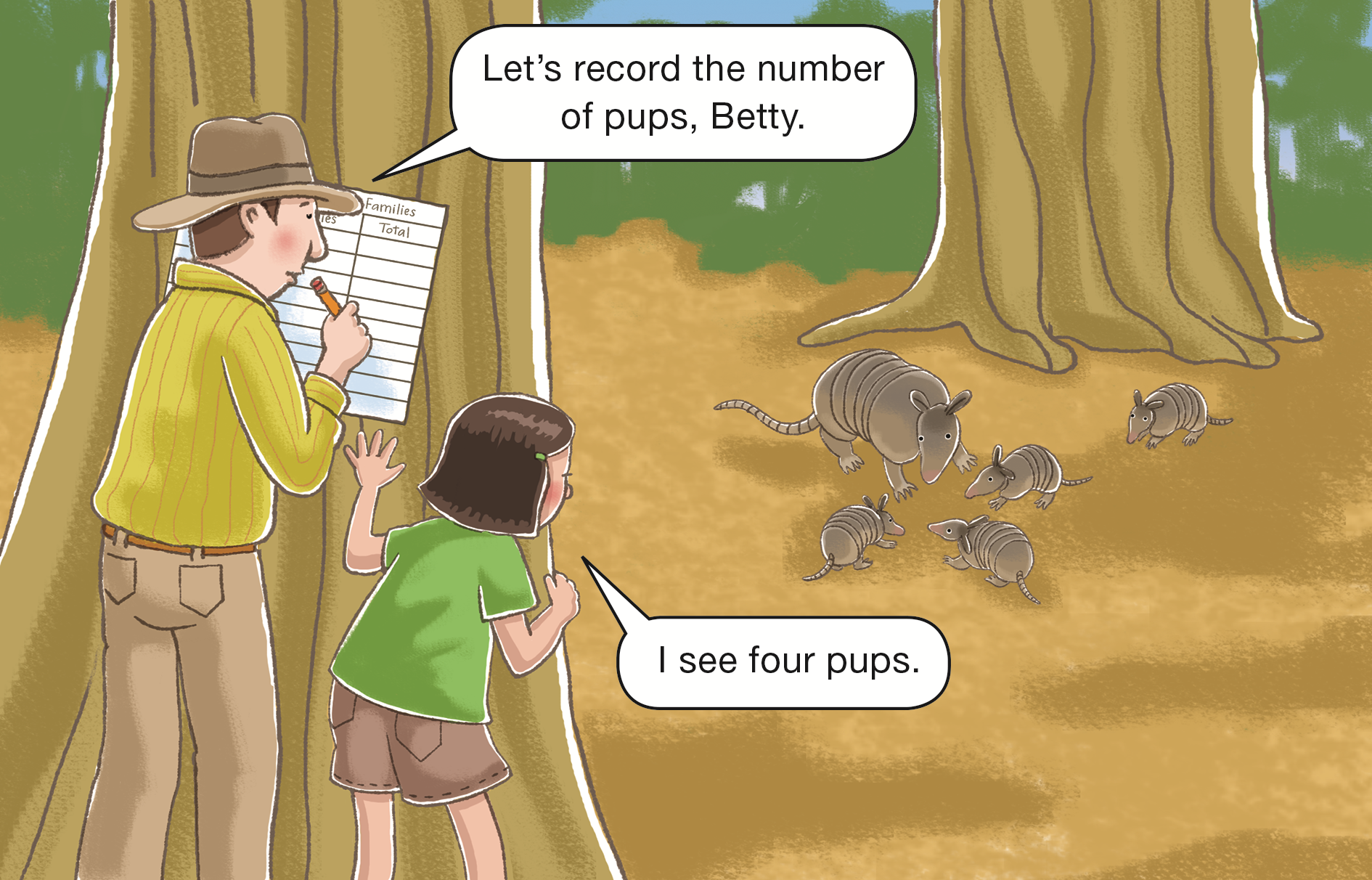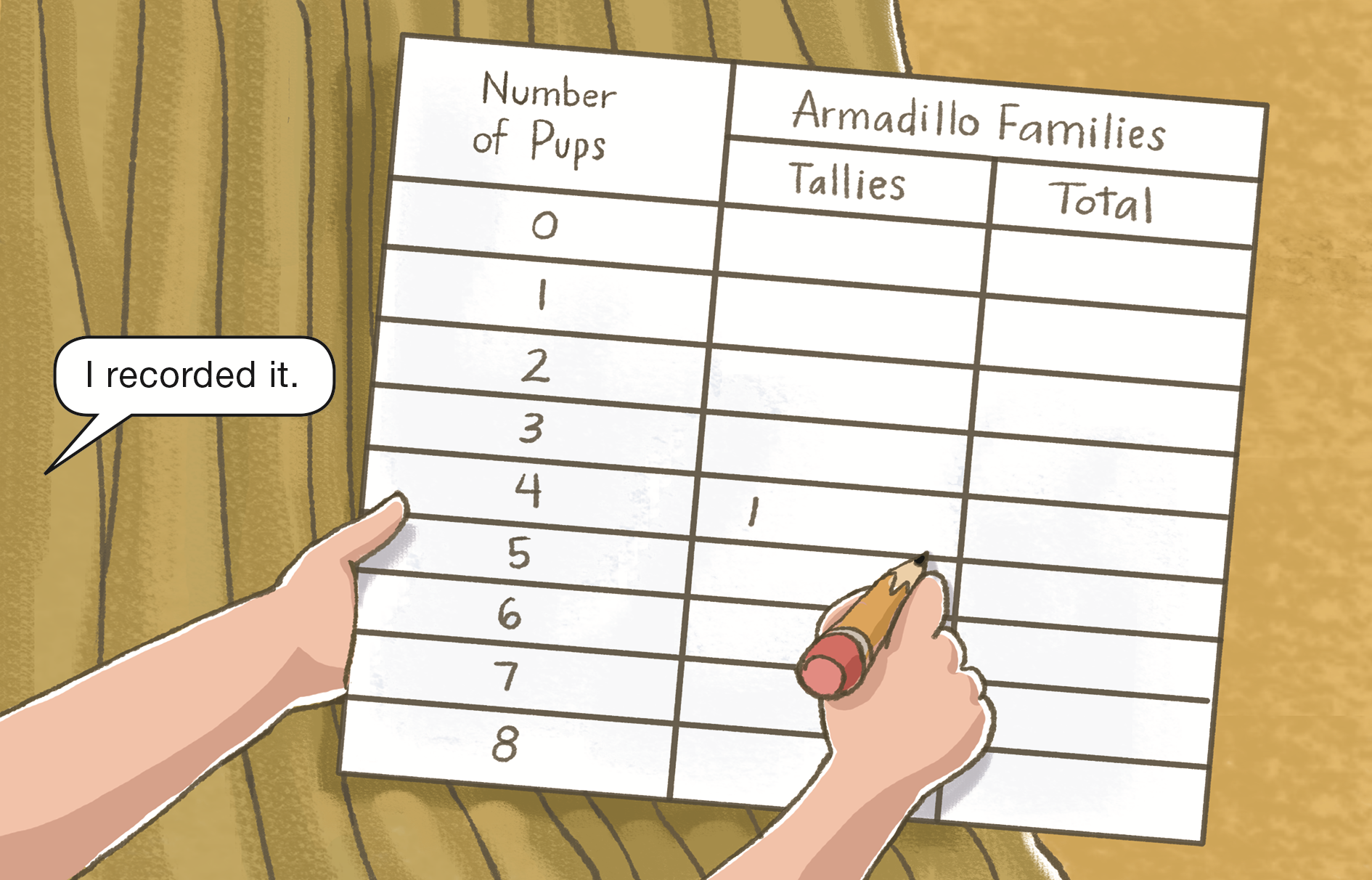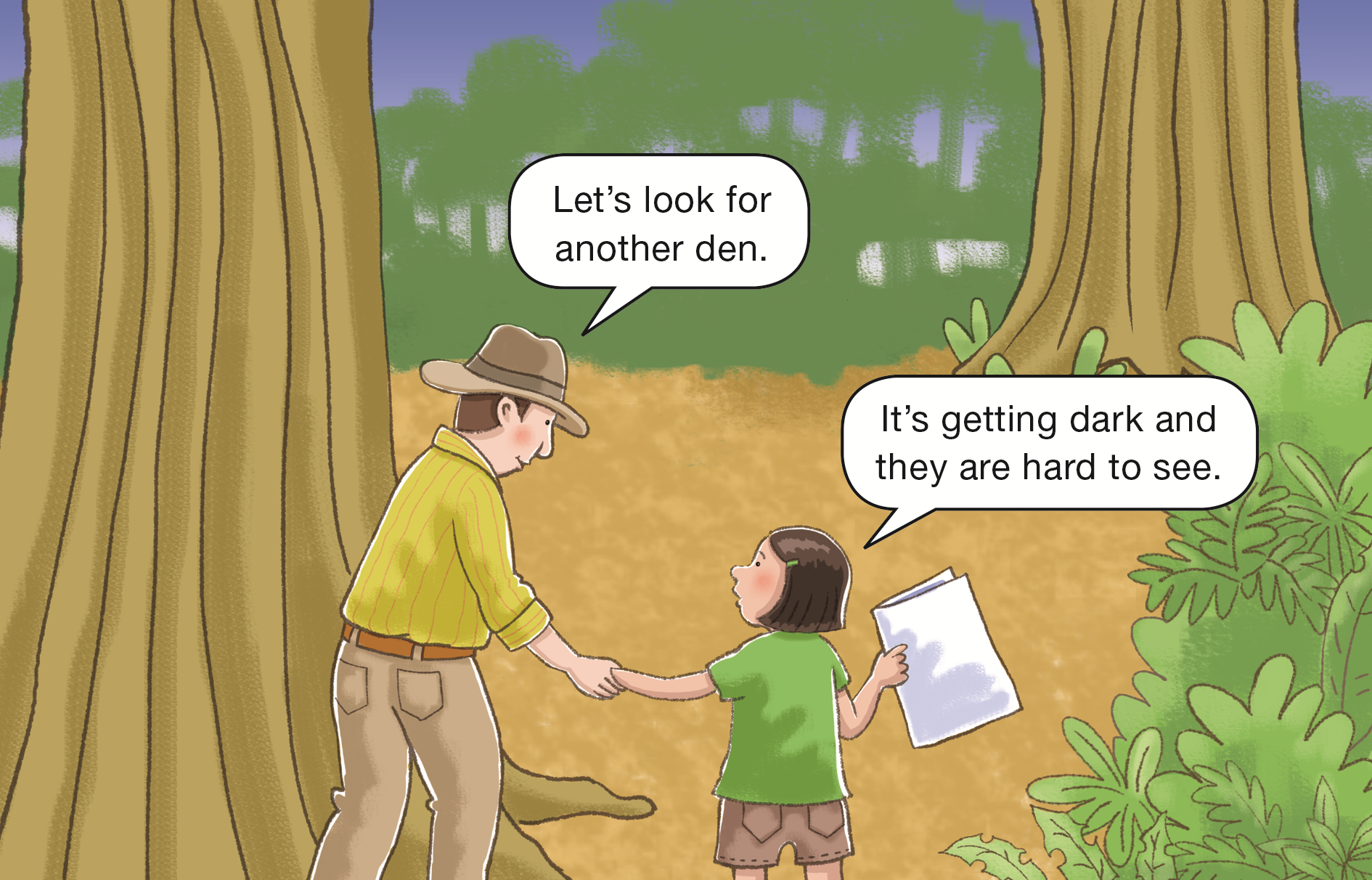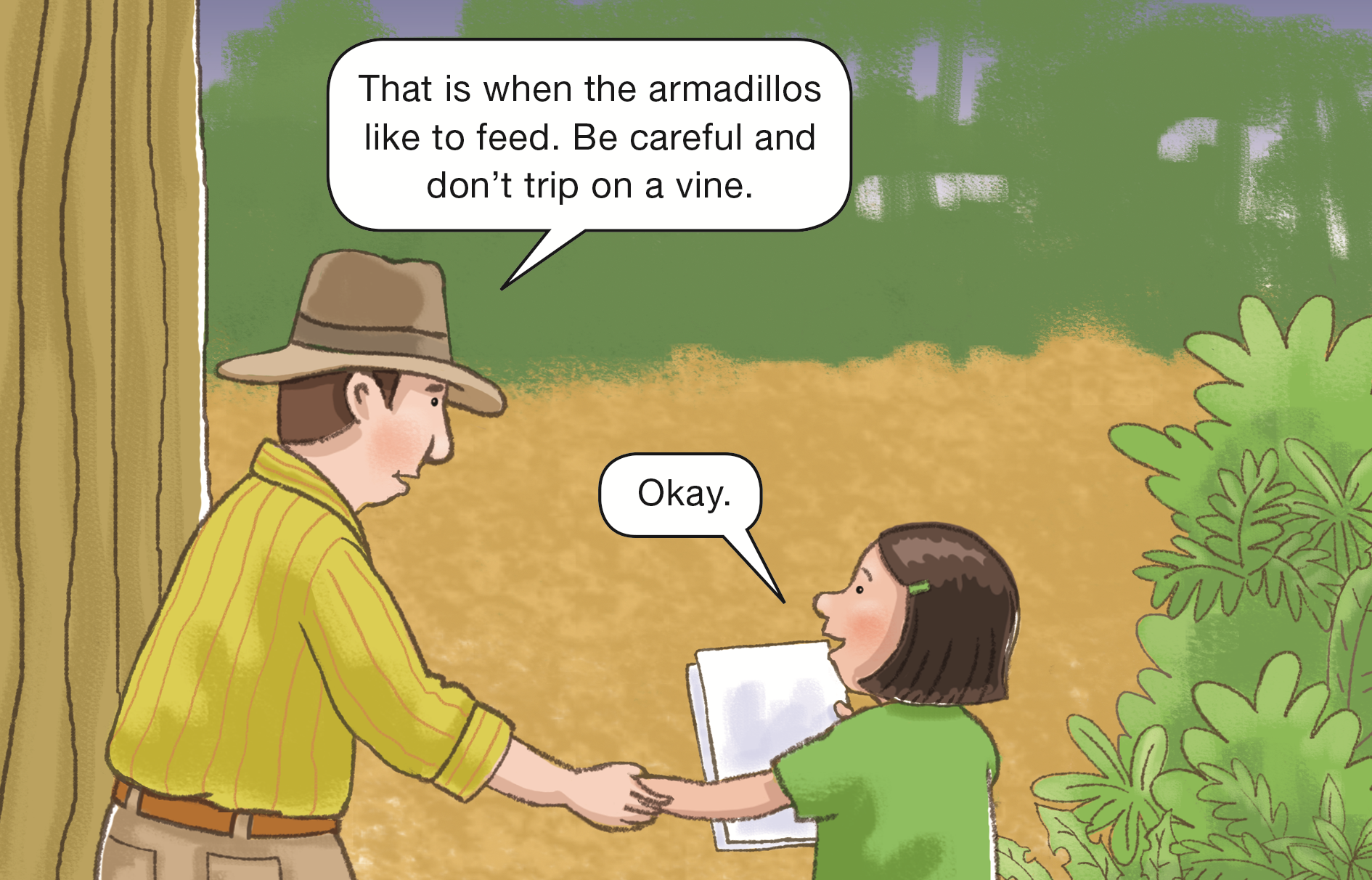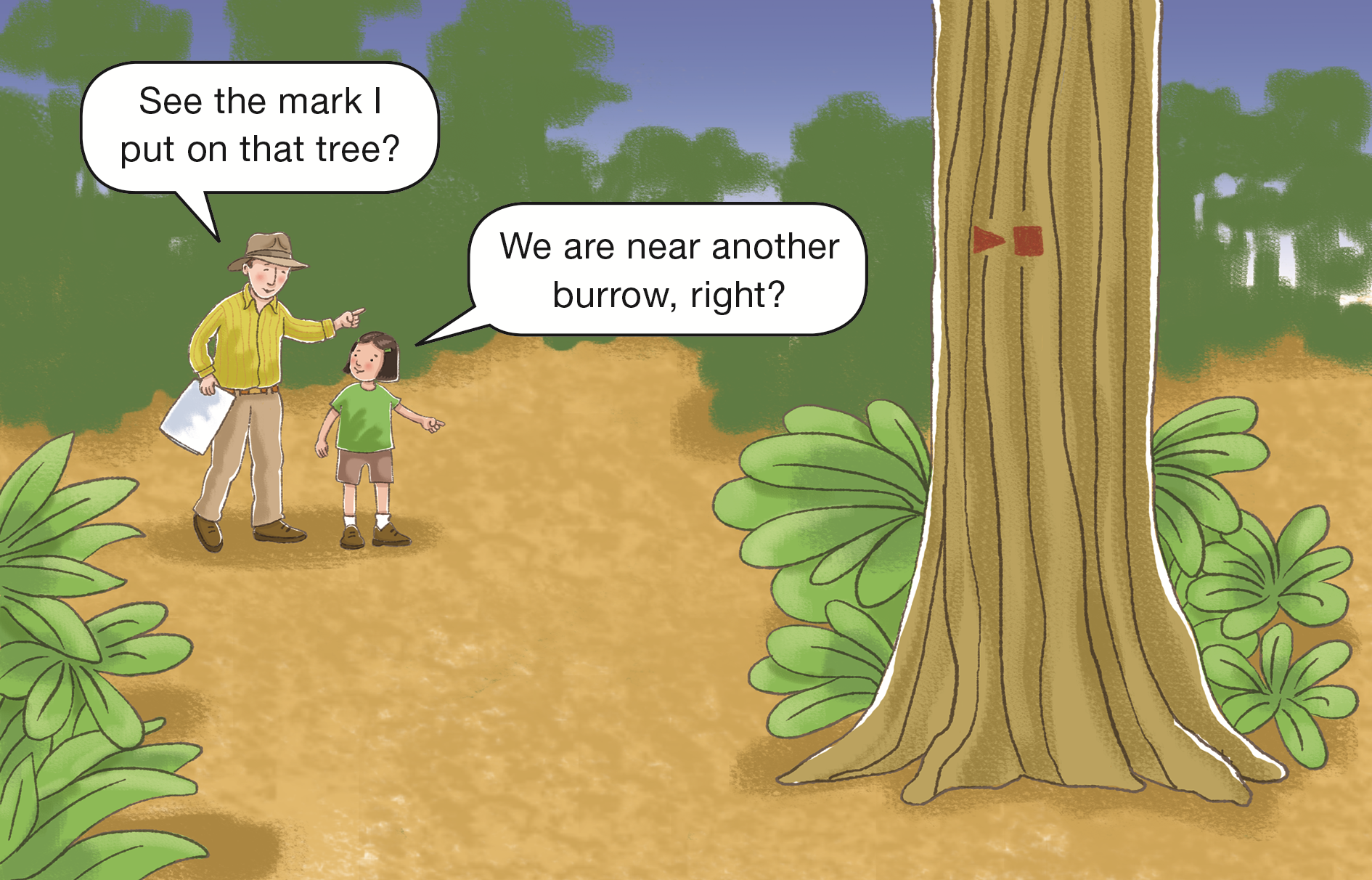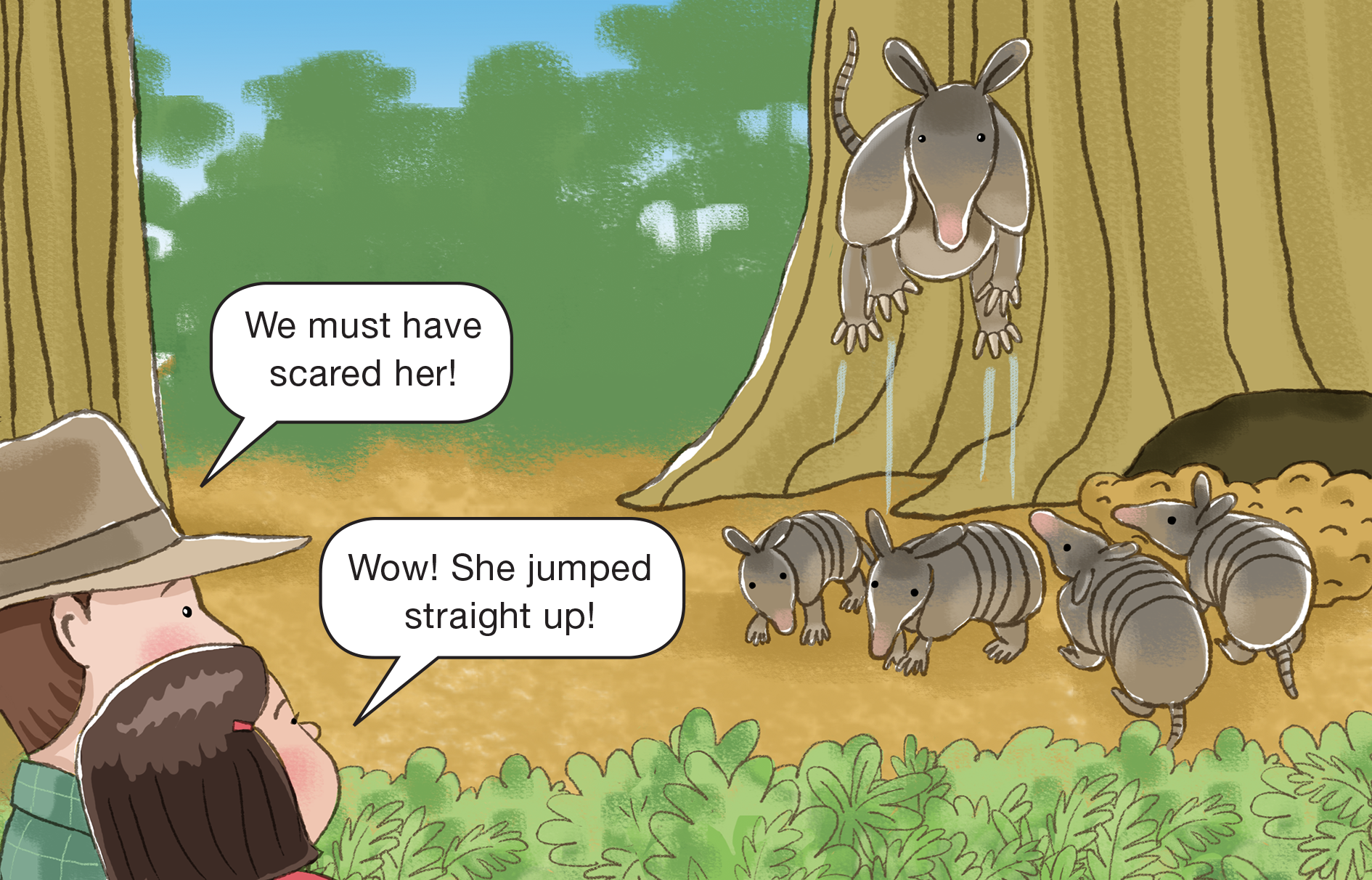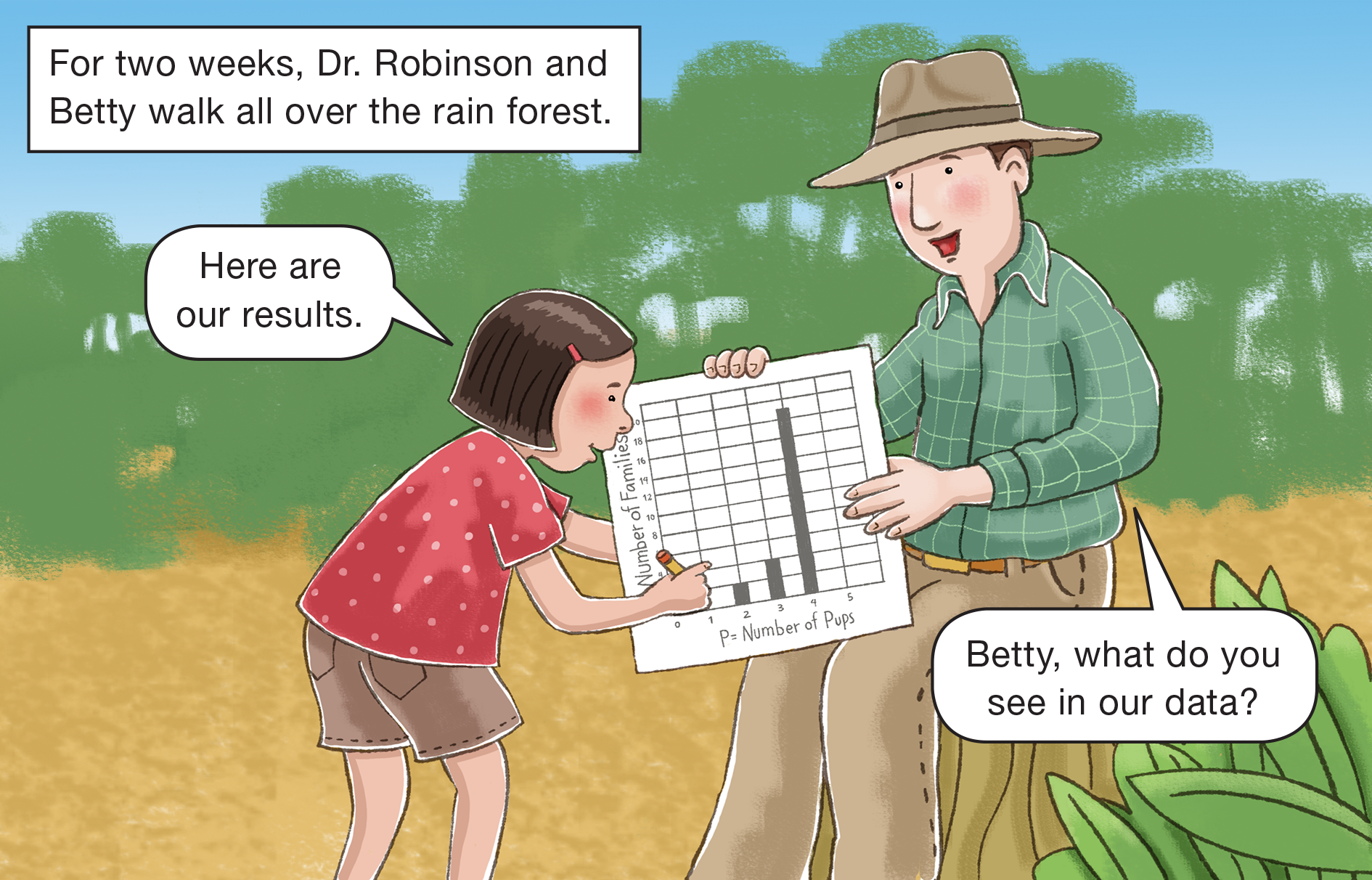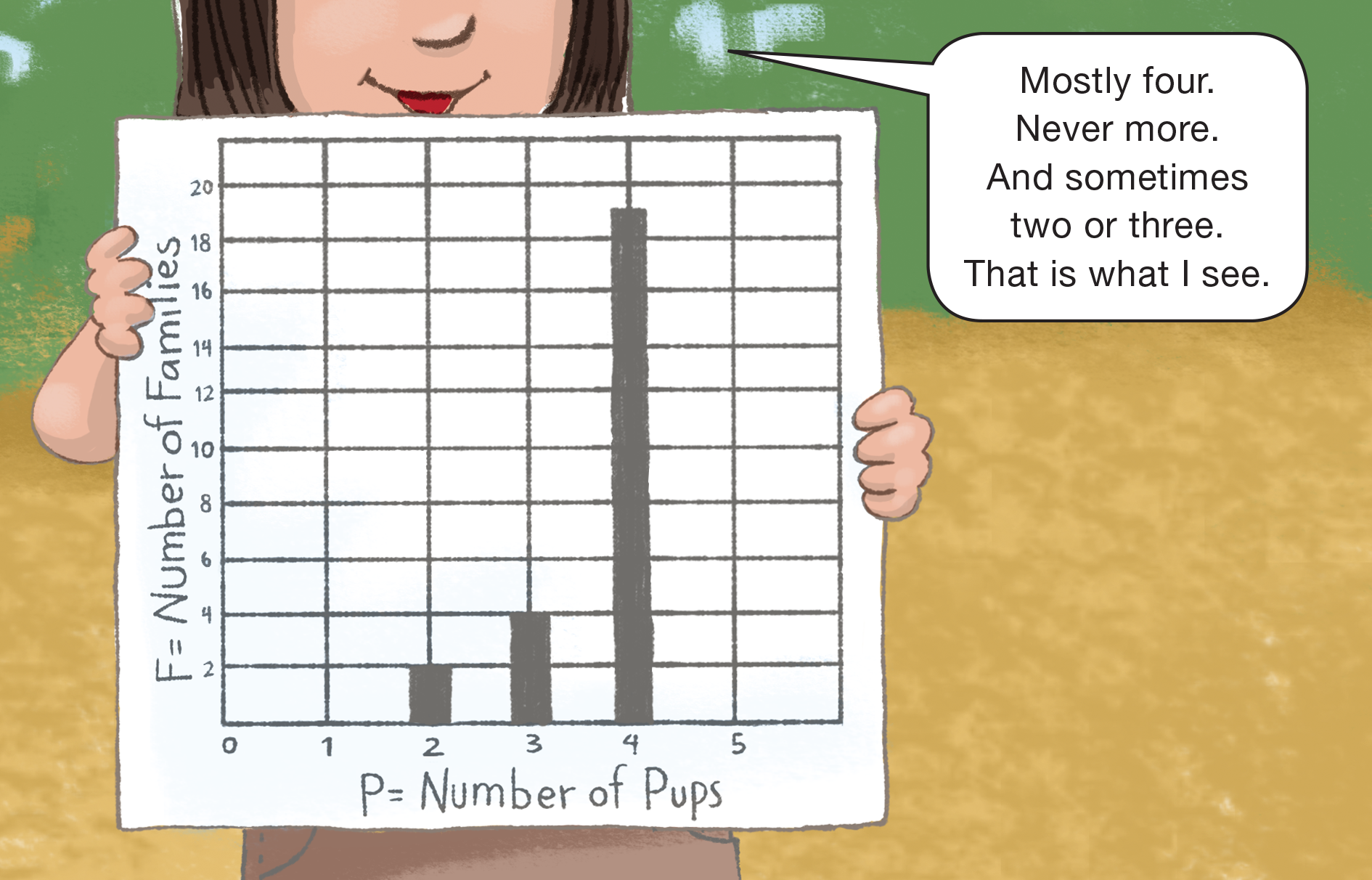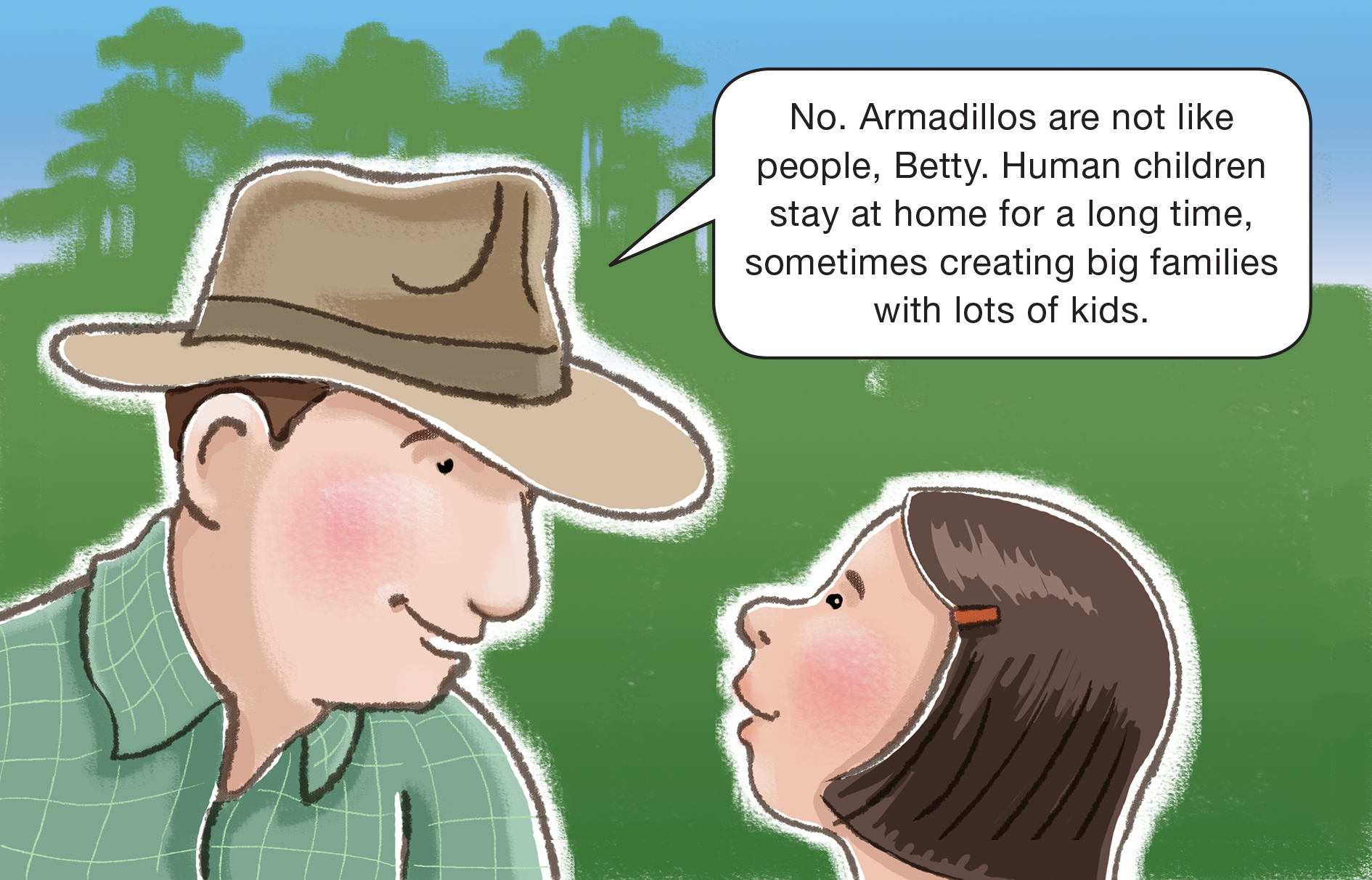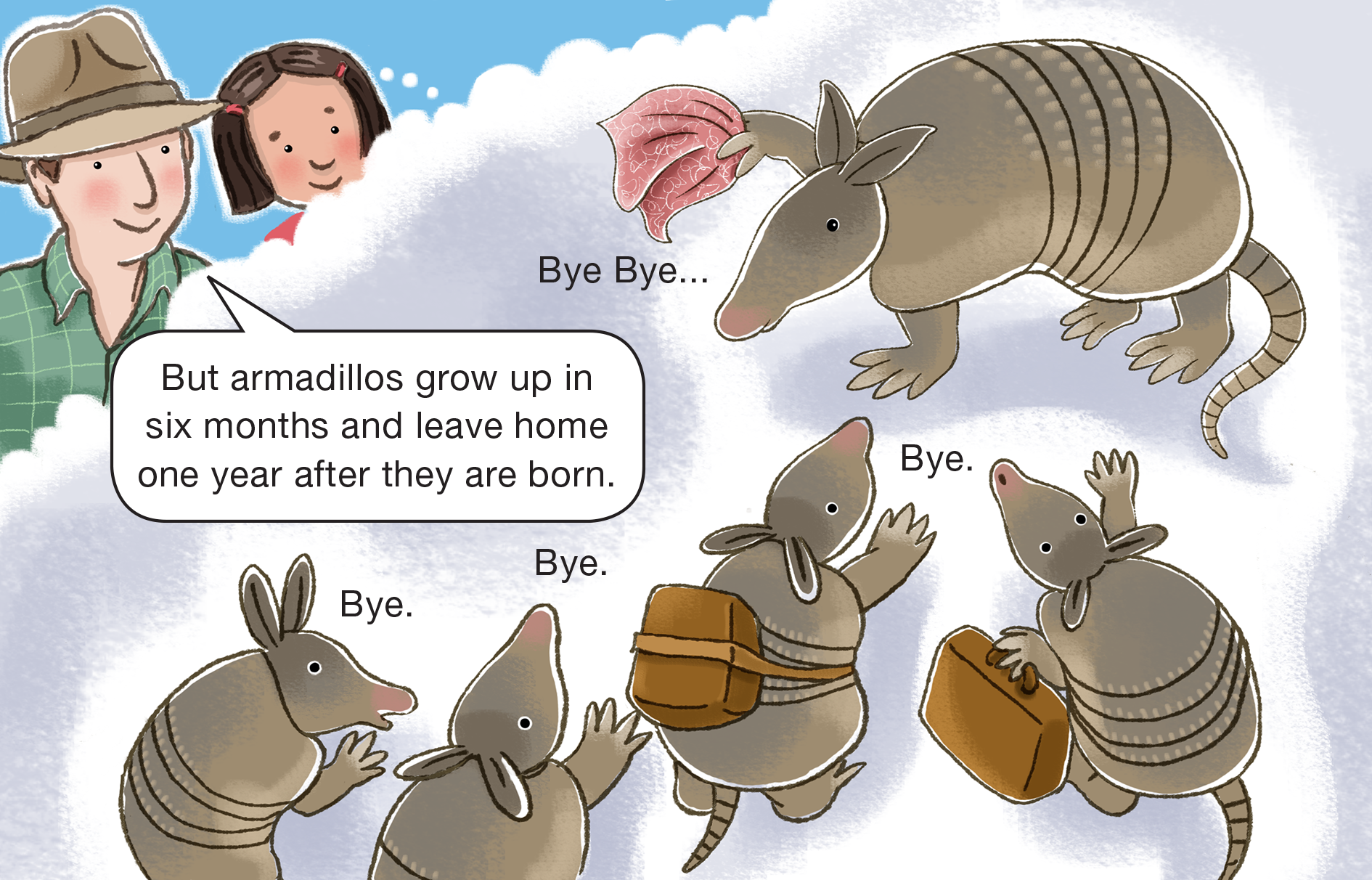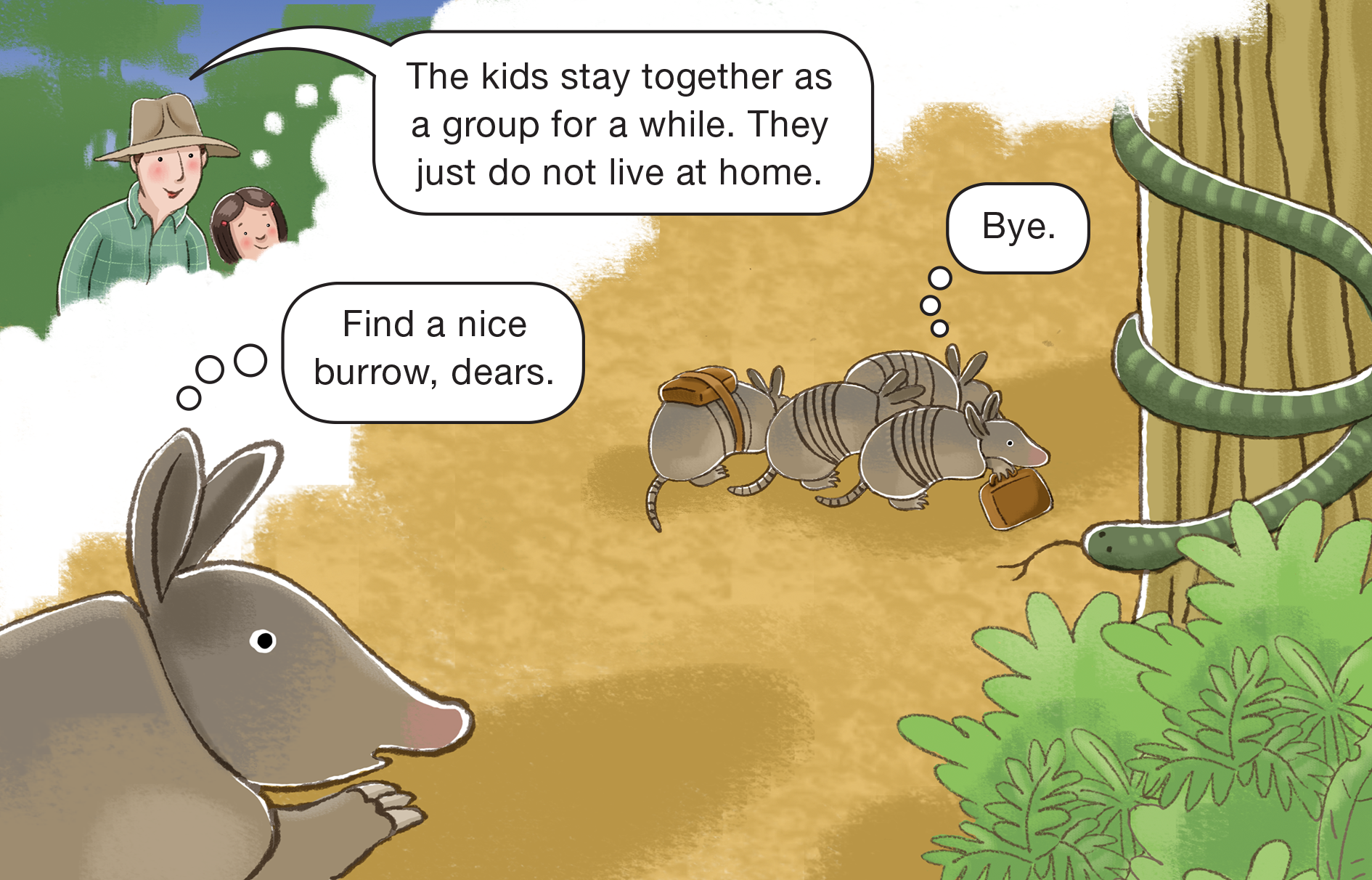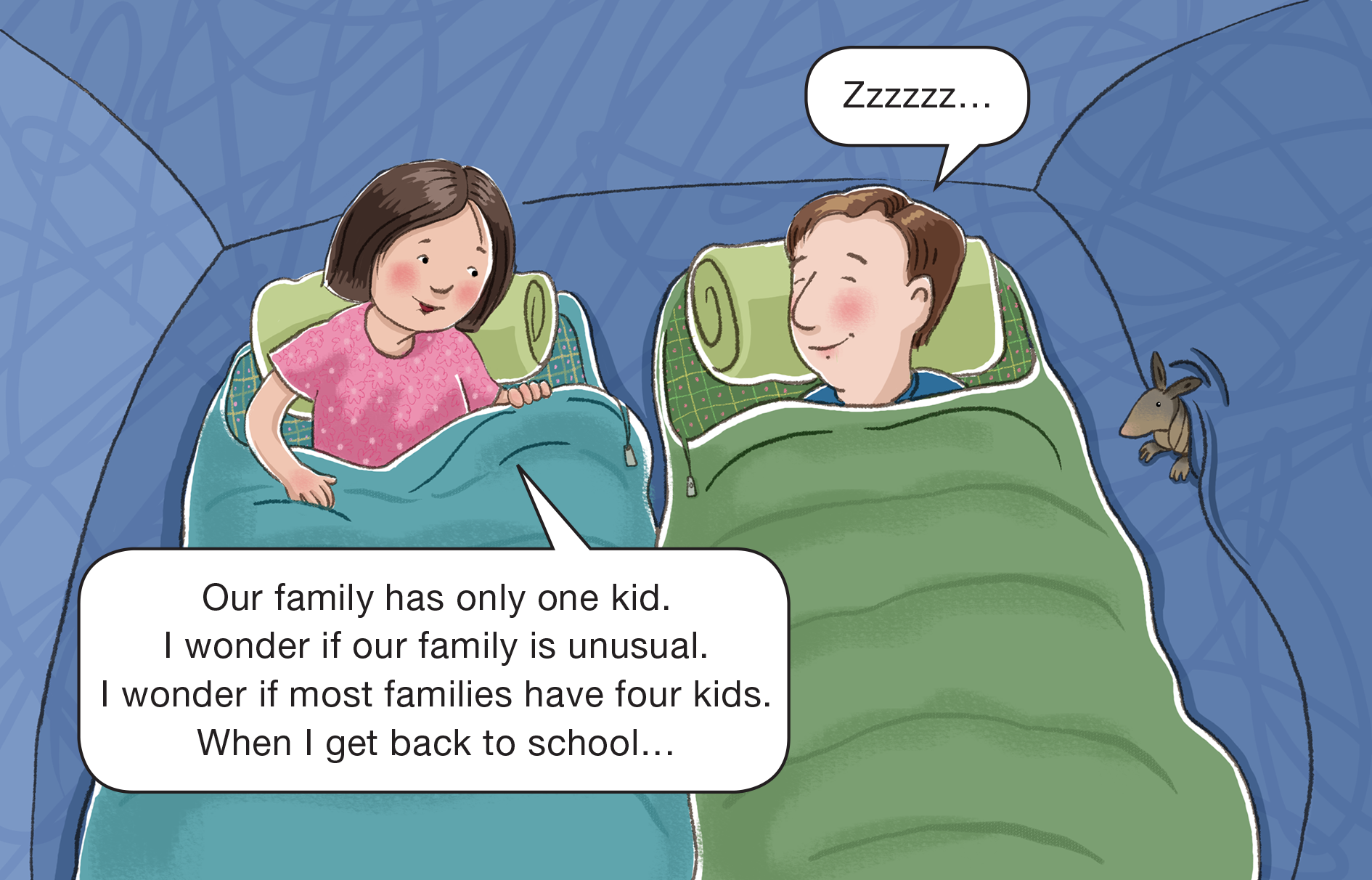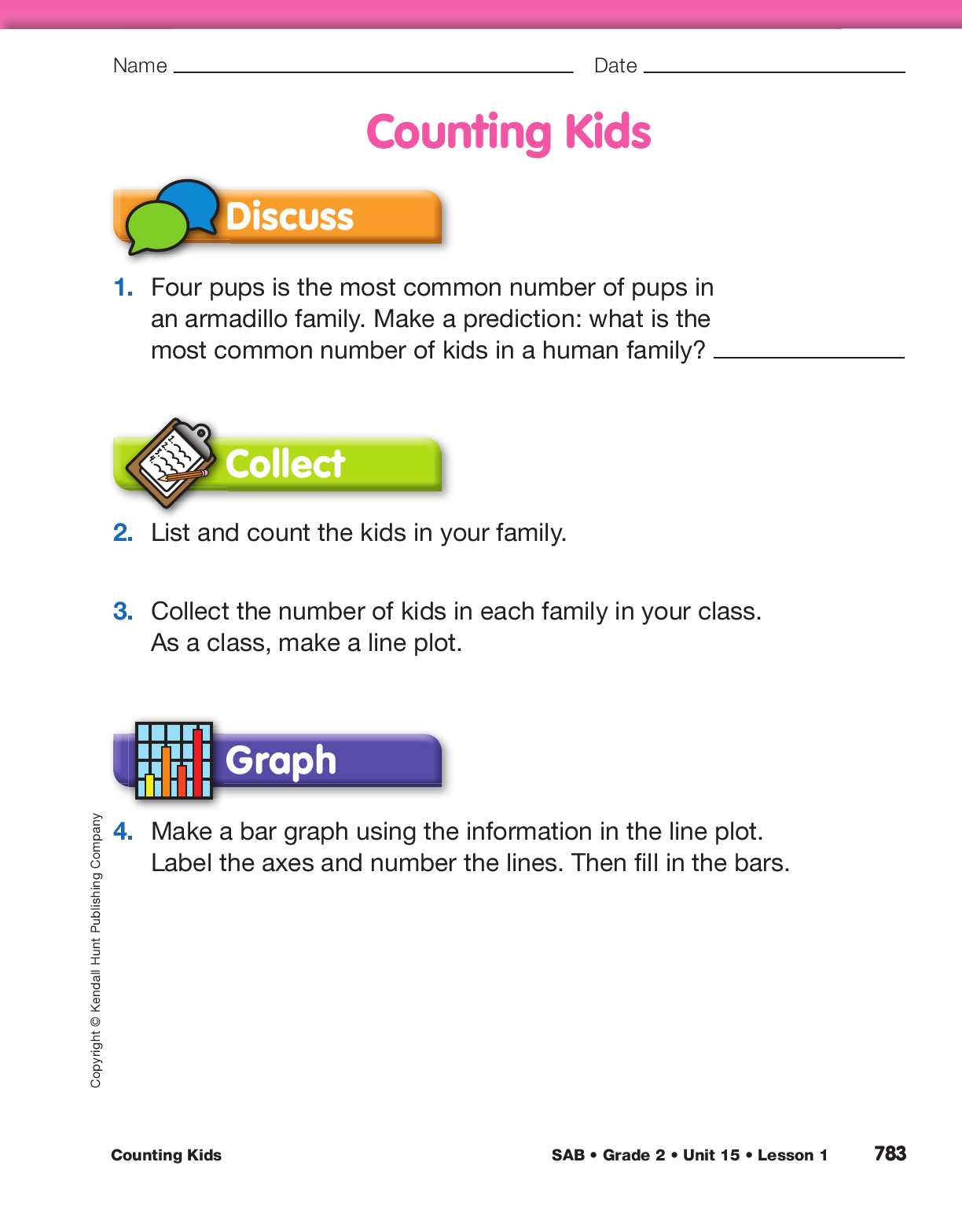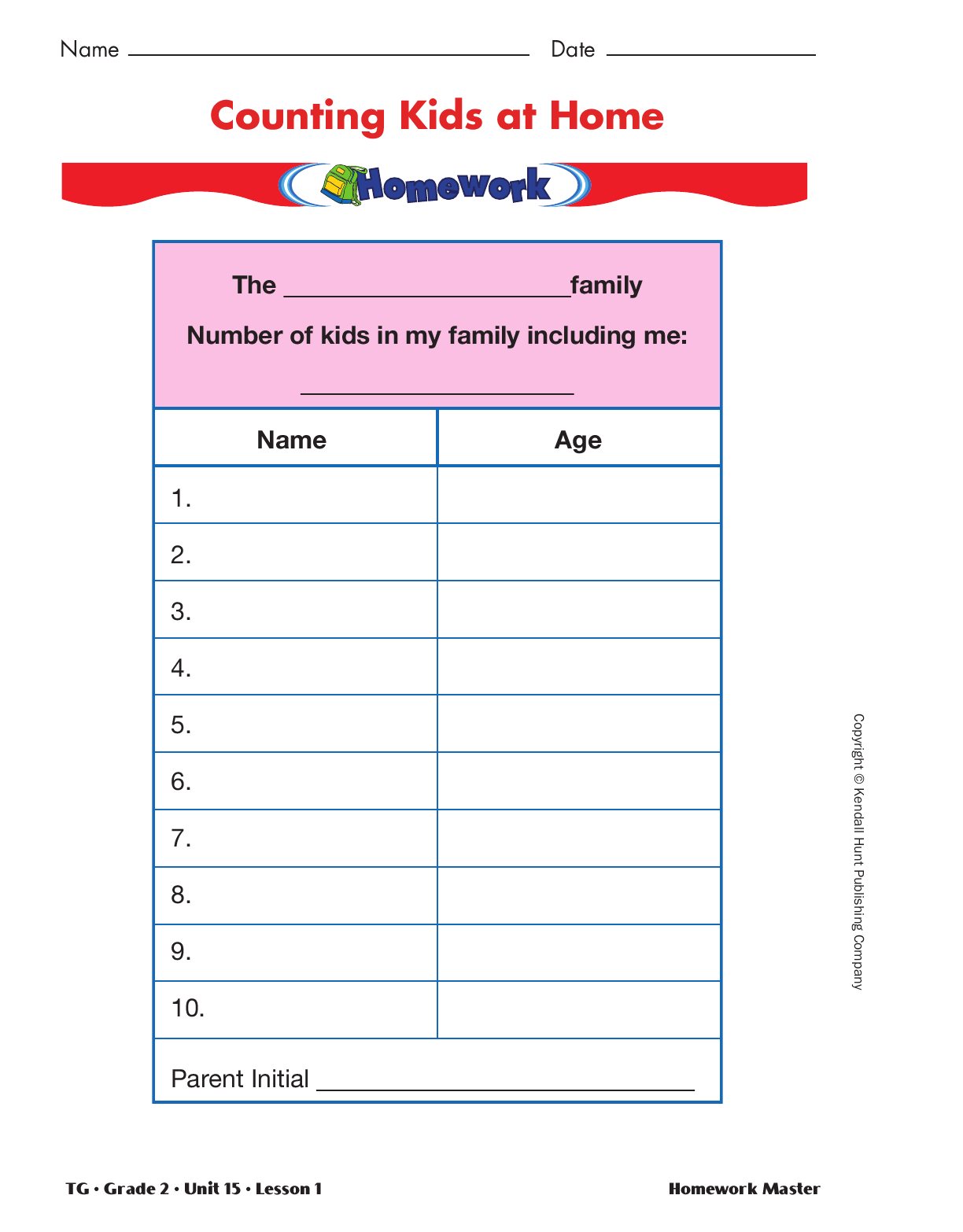Counting Kids
Est. Class Sessions: 2–3Developing the Lesson
Part 1: Introduce Counting Kids Survey
Read “Armadillo Families.” “Armadillo Families,” found in the Adventure Book, describes how Professor Robinson and his daughter Betty conduct research on armadillo families. Their research uncovers the fact that armadillos most often have four pups living in the family at one time, which leads Betty to wonder about the number of children in most human families. Explain to students that the professor and Betty are doing research about armadillo families in the Brazilian rain forest and show students where South America and Brazil are on a globe or world map. Use the following prompts to guide discussion about the story:
Pages 3–4
Ask:
Point out the different columns and what Betty will record in each column.
Pages 5–6
Ask:
Page 7
Ask:
Page 12
Ask:
Share with students that some nine-banded armadillos have a jump reflex that can vault them three feet into the air when they are startled.
Page 14
Ask:
Explain that armadillos consistently have quadruplets. See the Content Note for further information.
Have students note how the vertical axis is numbered (by 2s) and how to read the number indicated by each bar on the graph.
Pages 18–20
Ask:
Page 22
Ask:
Discuss the Counting Kids at Home Survey.
Introduce the Counting Kids survey with the following prompt:
Organize students into small groups and ask them to discuss the number of children in a human family and make a prediction about the number of kids in a human family. Students should realize that most human families do not have quadruplets as armadillo families do and that human children stay with their families for longer periods of time. After groups have had a chance to discuss their predictions, gather predictions from each group and record them on chart paper. These predictions will be revisited at the end of the lesson.
Tell students that they are going to conduct a survey about the families of their classmates like the survey Betty and her father conducted on armadillos. Explain that a survey is an investigation made by collecting information (data) and then analyzing it.
Lead a class discussion about how students will conduct their survey of the class. Encourage them to use the Adventure Book story as a model.
Ask:
Guide them to express the idea that there will be different numbers of children in different families, and that they want to find out how many families have one child, how many have two, how many have three, and so on. Point out to students that Betty and her father went to each den to count the number of pups in each armadillo family.
Ask:
Guide them to the idea that each student can collect his or her own family data. Students will fill in the Counting Kids at Home Homework Master in class and take the page home for verification from a parent.
As students list their family members on the data table, it is likely that questions will arise about who should be counted as children in the family. Students (and parents) may wonder, for example, if they should count children who live in their home who aren’t legally their siblings, siblings who live at home part of the time, or siblings who live somewhere else.
Such questions should be discussed and students should come to consensus about which children to include in the list. Explain to students that scientists face the same kinds of decisions in their research. If the class is having difficulty with these decisions, suggest that they collect data just as the Robinsons did in the Adventure Book, counting all the children who live in each home.
Draw a Picture.
Display a blank sheet of chart paper and ask:
Draw a picture to represent the variables in this investigation. The drawing should include a representation of more than one family, with the number of children emphasized in some way. See Figure 2.















